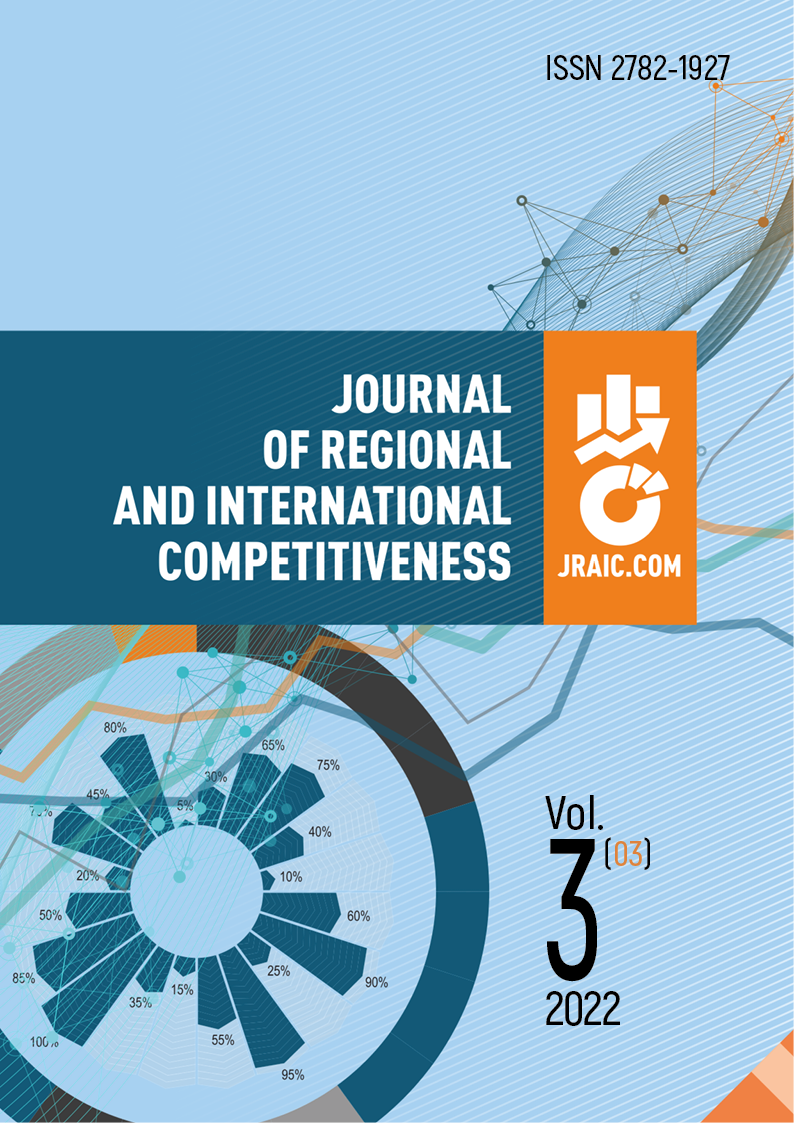Казань, Республика Татарстан, Россия
This article examines the genesis of global value chains as a result of action of the law of international division of labour on the modern world economy. During the globalisation, we prefer to assess the integration of national economies in terms of the main value added indicators developed by international institutions. Value-added indicators make it possible to identify advantages and disadvantages of the economic development of different types of countries. The study found: national institutions in the extractive industries of developing countries receiving foreign exchange earnings from raw material exports, then spend more foreign exchange for imports of manufactured goods from developed countries that process raw materials from developing countries; foreign corporations in developed countries, receiving raw materials from developing countries, develop the processing sectors of the national economy and create new jobs by increasing the wages of employees; foreign corporations are expanding the scale of production, the rate of capital accumulation, and recouping the costs of technological upgrading of production and modernising machinery through an increase in depreciation fund and profits; corporations in developing countries need to process raw materials (oil, gas, iron ore, non-ferrous metals, etc.) deeply, produce final goods and export them to world markets on their own; based on new technologies, produce innovative final goods and create high-tech jobs, increase the wages of workers and expand the domestic market.
GLOBAL VALUE CHAINS, FACTORS OF PRODUCTION, CAPITAL, LABOUR, INNOVATIVE PRODUCT, FINAL AND INTERMEDIATE GOODS
1. Kondratyev, V. (2019). Global Value Chains in Industries: Common and Special Features. Mirovaya ekonomika i mezhdunarodnye otnosheniya, 63(1), 49-58 (in Russian).
2. Leontiev, V. V. (2006). Selected works: in 3 vols. V. 1: General economic problems of intersectoral analysis. M.: Ekonomika (in Russian).
3. Leontiev, V. V. (2006). Domestic Production and Foreign Trade: A New Study of the Position of American Capital. Milestones of economic thought. V. 6. International economy. A. P. Kireev (Ed.). M.: TEIS (in Russian).
4. Lukyanov, S., & Drapkin, I. (2017). Global Value Chains: Effects for Integrating Economy. Mirovaya ekonomika i mezhdunarodnye otnosheniya, 61(4), 16-25 (in Russian).
5. Ohlin, B. (1967). Interregional and International Trade. Harvard University Press.
6. Sidorova, E. (2018). Russia in Global Value Chains. Mirovaya ekonomika i mezhdunarodnye otnosheniya, 62(9), 71-80 (in Russian).
7. Heckscher, E. F. (2006). The Impact of Foreign Trade on Income Distribution. Milestones of economic thought. V. 6. International economy. A. P. Kireev (Ed.). M.: TEIS (in Russian).
8. Chetverikova, A. (2018). Global Value Added Chains in Ferrous Metallurgy: Russian Participation. Mirovaya ekonomika i mezhdunarodnye otnosheniya, 62(8), 97-103 (in Russian).
9. OECD.org. (2022). OECD Inter-Country Input-Output (ICIO) Tables. Retrieved from https://www.oecd.org/sti/ind/inter-country-input-output-tables.htm (accessed 10.09.2022).
10. Trade in Value Added (TiVA) 2021 ed: Principal Indicators. Retrieved from https://stats.oecd.org/ Index.aspx DataSetCode=TIVA_2021_C1#] (accessed 11.09.2022).
11. Federal Customs Service of the Russian Federation. Customs statistics. Retrieved from https://customs.gov.ru/statistic (accessed 11.09.2022) (in Russian).
12. Volga Customs Directorate of the Federal Customs Service of the Russian Federation. Foreign trade of the subjects of the RF PFD. Retrieved from https://ptu.customs.gov.ru/folder/146699 (accessed 11.08.2022) (in Russian).




















